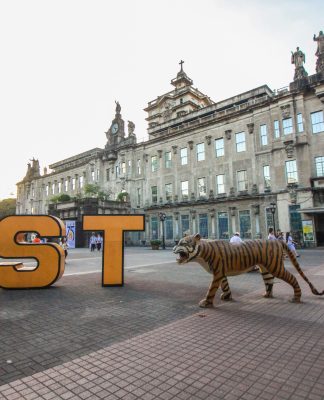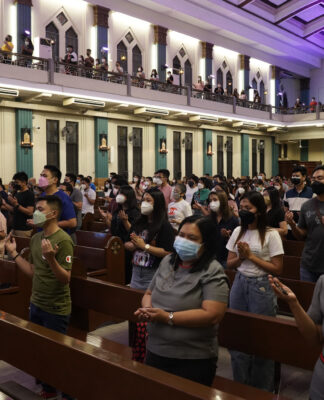INNOVATION is wealth.
The need to protect the innovative and profitable research output of Thomasian inventors prompted the University to establish its own Intellectual Property (IP) unit.
Michael Jorge Peralta, executive assistant for Intellectual Property and Research, said UST generates numerous IPs because of the level of maturity and productivity the University reached in the field of research.
“Many of us are not aware that these IPs need to be protected to prevent others from copying and imitating the same work and claim it their own,” he said. “Thus, there was a need to create an IP policy to guide University stakeholders.”
Launched in 2009, the IP unit, then under the Office of the Vice-Rector for Academic Affairs and Research, was tasked to assist faculty members and students in registering any IP that they have developed in the course of their employment or study.
“With the numerous researches produced by the faculty and students, there is a wealth of technology waiting to be registered and used for public consumption,” Peralta said.
“IP ensures that as the technologies are being used, the inventors and owners of it are given due recognition by law.”
Novel and profitable
In 2010, the Intellectual Property Office of the Philippines (Ipophil) officially granted the University an Innovation and Technology Support Office (ITSO).
The ITSO serves as a patent search facility, as well as the IP unit, that identifies the patentability of a research proposal.
“When you are proposing a research project, there should be an innovated output,” said Graduate School Lead for the Sciences Christina Binag in an interview.
She added that to know if a research project is truly innovative, a patent search must be done.
“[The researcher has] to know if what he is doing is just a repetition of what has already been done or will it bring out a new product that can readily be patented,” Binag said.
“If the proposed project already exists, the researcher can branch out of the topic to make it more novel.”
Peralta added that patent search conserves time, effort and valuable resources of researches and prevents “re-inventing the wheel.”
“[We] can recommend improvements in the existing technologies by addressing its deficiencies and weaknesses, thus creating innovations,” he said.
A patented invention can be sold to entrepreneurs, whose role is to make the technology available for mass consumption. As a result, the inventor, as well as the University gets financial benefits by means of royalties.
“Most universities overseas are earning because of the royalties paid back,” she said.
Moreover, Peralta emphasized that the presence of an ITSO will also boost UST’s ranking in Asia’s top universities list where research is a major component.
“ITSO can provide our researchers with very valuable information about their topic of study,” he said, adding that it helps improve research by ensuring that the projects are innovative and novel.
Open to all
ITSO also holds seminar-workshops in every college to educate students, faculty members and researchers about the importance of filing an IP for their innovative products.
“[These activities] sought to increase the awareness of both students and faculty about the value of IP information as well as the advantages of protecting it,” Peralta said.
“[We] also point out the possible prospects of commercialization of innovation through proper registration.”
ITSO also provides services to other fields of specialization.
“There are a lot of IP that are generated from research outputs ranging from copyright to industrial design, utility models and patents,” Peralta said. “If anyone wants to be informed on what IPs they can protect, they are free to pass by the office and inquire.”
Waiting for approval
Since its inception, ITSO has filed two patent applications, one on May 31, 2013 and another last Feb. 11, 2014. Both are waiting for the patent examiner’s evaluation and assessment.
According to Republic Act 8293, or the Intellectual Property Code of the Philippines, after the filing of the patent application and the payment of required fees, a formality examination will be conducted for classification and determination of its novelty.
By 18 months after the filing of application, the search document will be published in the IPO Gazette, Ipophil’s official publication, and will finally undergo a substantive examination.
“This is the phase where that patent examiner evaluates and assesses the application’s novelty and inventive step,” Peralta said. “If all is in order, the turnaround time from filing to the grant of the patent is about 4.3 years.”
The term of a patent is 20 years from the filing date of the application, according to the Intellectual Property Code.
A patent application, which has not yet been published, and all related documents, shall not be made available for inspection and is kept confidential, the IP Code states.
“We regret that our office cannot reveal the technologies of our filed applications since we are bounded by confidentiality agreements with the proponents,” Peralta explained. Michael Carlo C. Rodolfo

















